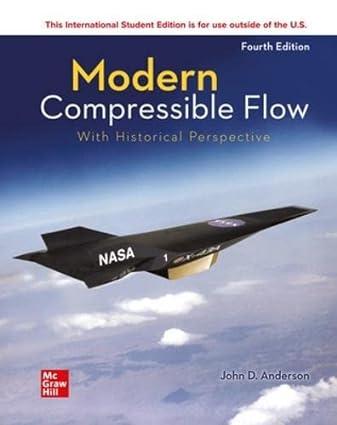Consider again the rocket engine discussed in Examples 1.6 and 3.2. If the thrust of the engine
Question:
Consider again the rocket engine discussed in Examples 1.6 and 3.2. If the thrust of the engine is \(4.5 \times 10^{5} \mathrm{~N}\) at an altitude where the ambient pressure is \(0.372 \mathrm{~atm}\), calculate the mass flow through the engine and the area of the exit.
Data From Example 3.2:
Return to Example 1.6. Calculate the Mach number and velocity at the exit of the rocket nozzle.
Data From Example 1.6:
Consider the flow through a rocket engine nozzle. Assume that the gas flow through the nozzle is an isentropic expansion of a calorically perfect gas. In the combustion chamber, the gas which results from the combustion of the rocket fuel and oxidizer is at a pressure and temperature of \(15 \mathrm{~atm}\) and \(2500 \mathrm{~K}\), respectively; the molecular weight and specific heat at constant pressure of the combustion gas are 12 and \(4157 \mathrm{~J} / \mathrm{kg} \cdot \mathrm{K}\), respectively. The gas expands to supersonic speed through the nozzle, with a temperature of \(1350 \mathrm{~K}\) at the nozzle exit. Calculate the pressure at the exit.
Step by Step Answer:






